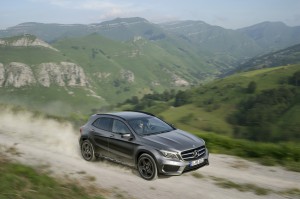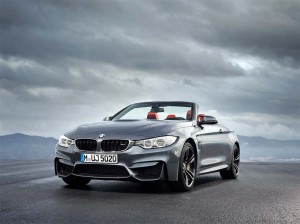BMW and Mercedes-Benz are locked in a battle royal for the sales crown in the prosperous market for luxury cars in the U.S. BMW held the title for the two previous years, but one of the two has been the leader since 2011: the last year Lexus held the crown.
“One of the noteworthy facts in the October U.S. new vehicle sales results is that BMW now leads its archrival Mercedes-Benz by just 5,389 sales through the first ten months of this year,” IHS Automotive Analyst Tom Libby said.
“With such a small gap in sales through 10 months, the two makes will most likely use marketing tools extensively through the end of the year, including numerous types of incentives, to gain an edge.”
Mercedes-Benz reported its sales in October 2014 dropped 4.9%. But October was still automaker’s best month of the year with 28,593 vehicles sold. In fact, it’s year-to-date sales figures are the best in its history with 261,804 units, an increase of 6.8% from the 245,125 vehicles sold through the first 10 months of 2013, said Stephen Cannon, president and CEO of MBUSA.

Mercedes is the "defending sales champ" in the U.S. market, but it trailing BMW, which is seeking to get the crown back.
“We’re building momentum month after month, working toward a record year despite the challenges posed by spot shortages in some of our most popular model lines,” he added.
However, after surrendering the sales U.S. luxury-vehicle crown to Mercedes-Benz in 2013, sales of BMW brand vehicles increased 11% in October, totaling 30,602 compared to 27,574 vehicles sold in October 2013. Year-to-date, the BMW brand is up 12% on sales of 267,193 compared to 238,469 sold in the first ten months of 2013.
“The momentum is still with us as shown by back-to-back monthly records for BMW in October and September,” said Ludwig Willisch, president and CEO, BMW of North America.
“Our new models, especially the 2 and 4 Series, are giving BMW a great boost as we head into the final two months of the year, but I am also very pleased to see our born-electric BMW i3 doing so well, averaging a thousand per month in sales after only four months on the market.”
Lexus, Toyota’s luxury brand, which is popular on the West Coast, also increased its sales by 14.3%, having sold 244,000 vehicles through the first 10 months of the year.
John Krafcik, the president of TrueCar Inc., an internet-based car buying service based in Santa Monica, California, said the Volkswagen Group is also a major factor in the luxury market in the U.S. because Audi has posted 46 consecutive monthly sales record and so far this year. Audi reported that its October 2014 sales increased 16.5% to 15,150 vehicles. Audi U.S. sales year-to-date increased 14.7% to 146,133 vehicles.
(Mercedes attempting to clean up alphabet soup nomenclature. For more, Click Here.)
In addition, Porsche, the Volkswagen Group’s other luxury brand, also reported strong sales this year, Porsche Cars North America, Inc. reported October sales increased 2.5% to 3,667 vehicles. For the year, the maker has delivered 39,033 vehicles in the U.S., an increase of 11.2% during the same time period in 2013.
Krafcik noted the strong showing by Porsche and Audi shift the complexion of the Volkswagen Group’s performance in the hotly contested U.S. market. While the Volkswagen brand has faltered over the past couple of years, Audi and Porsche have picked up the slack in the U.S. market.
(Click Here for details about BMW’s 3Q profit slide.)
While foreign luxury carmarkers have been enjoying success in the U.S. market, domestic brands haven’t been able to replicate the same level of accomplishment with their luxury units.
Cadillac, General Motors’ luxury brand, which once ruled the American luxury market, has slipped so far this year, dropping by 8% in October and by 4% during the first 10 months. However, the Cadillac brand has produced substantial revenue for GM, accounting for about 11% of GM’s 100 billion dollars from the sales of new vehicles, Krafcik said during a luncheon with reporters in Detroit.
(New vehicle buyers gobble up luxury vehicles in October. Click Here for the report.)
Ford gets only 4% of its revenue from its Lincoln luxury brand, said Krafcik, who noted Americans this year are spending 79% more for new vehicles, a total of 521 billion dollars, than they did in 2009.
Alec Gutierrez, senior analyst for Kelley Blue Book in Irvine, Calif., said other broader trends such as lower gasoline prices and rising consumer confidence also have given sales a boost this year.
“With gas prices at a three-year low and with consumer confidence at a seven-year high, this trend should continue,” he said.

